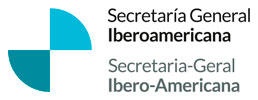Resultados: visualización detallada
Registro 1 de 1 para la búsqueda tipo de materia Riesgos ergonómicos; manipulación de pacientes; ayudantes de enfermería y auxiliares
Riesgos ergonómicos en las tareas de manipulación de pacientes, en ayudantes de enfermería y auxiliares generales de dos unidades del Hospital Clínico de la Universidad de Chile
Pérez Domínguez, Sebastián Alberto; Sánchez Aguilera, Pablo Ignacio
Cerda Díaz, Leonidas
Ortiz Zúñiga, Sylvia
2009
- Datos de edición CyberDocs
- Tipo de Documento Libro
- Materia Riesgos ergonómicos; manipulación de pacientes; ayudantes de enfermería y auxiliares
-
Descripción
El objetivo de esta investigación es determinar el riesgo ergonómico presente en las tareas de manipulación manual de pacientes realizadas por los ayudantes de enfermería y auxiliares generales del servicio de Medicina Física y Rehabilitación y la Unidad de Cuidados Intensivos del Hospital Clínico de la Universidad de Chile, así como también el número de licencias de origen músculo - ...El objetivo de esta investigación es determinar el riesgo ergonómico presente en las tareas de manipulación manual de pacientes realizadas por los ayudantes de enfermería y auxiliares generales del servicio de Medicina Física y Rehabilitación y la Unidad de Cuidados Intensivos del Hospital Clínico de la Universidad de Chile, así como también el número de licencias de origen músculo - esquelético que presenten en los últimos dos años.Este estudio se realizó en una población de 30 ayudantes de enfermería y auxiliares generales del Hospital Clínico de la Universidad de Chile, 9 del Servicio de Medicina Física y Rehabilitación y 21 de la Unidad de Cuidados Intensivos. Tres individuos que trabajaban paralelamente en otra unidad o establecimiento, o que tenían patologías crónicas, fueron excluidos del estudio.Primero se les realizó una encuesta para conocer datos básicos, determinar las tareas de manipulación y el número de licencias de tipo músculo - esqueléticas asociadas al trabajo y luego, a través del método REBA, se evaluaron las tareas habituales de dicho personal estableciendo el riesgo asociado a éstas. El número de licencias fue corroborado con información estadística manejada en cada unidad.Los resultados de la evaluación muestran que las tareas evaluadas en la Unidad de Cuidados Intensivos, “Traslado a examen o a otra unidad”, “Aseo de pacientes” y “Acomodación de pacientes”, presentan un promedio de riesgo global de 10,05; 9,7 y 8,79 respectivamente. Las tareas “Aseo de pacientes”, “Baño en ducha”, “Traslado de cama a gimnasio”, “Traslado de gimnasio a cama” y “Medición de pacientes”, observadas en el Servicio de Medicina Física y Rehabilitación, obtuvieron un promedio global de 7,64; 8,65; 9; 8,52 y 10 respectivamente. El número de licencias de origen músculo - esquelético presentadas por el personal en estudio durante los años 2008 y 2009 fueron 12 licencias en la UCI y 2 en Medicina Física y Rehabilitación, representando un promedio de 0,57 y 0,2 licencias por funcionario respectivamente.Se concluye de esto, que las tareas de manipulación en ambas unidades representan un nivel de riesgo “Alto” de padecer Trastornos Músculo - esqueléticos, por lo que en el personal de la Unidad de Cuidados Intensivos existe una mayor exposición a otros factores de riesgo que inciden en el desarrollo de estos trastornos.The objective of this investigation is to determine the ergonomic risk present in the manual handling task of patients performed by nurse aids and general assistants in the Physical Medicine and Rehabilitation Service as well as the Intensive Care Unit at the Clinical Hospital of University of Chile, as also the numbers of musculoskeletal licenses in the last two years.This study was performed on a test group of 30 nurse aids and genera ...The objective of this investigation is to determine the ergonomic risk present in the manual handling task of patients performed by nurse aids and general assistants in the Physical Medicine and Rehabilitation Service as well as the Intensive Care Unit at the Clinical Hospital of University of Chile, as also the numbers of musculoskeletal licenses in the last two years.This study was performed on a test group of 30 nurse aids and general assistants at the Clinical Hospital of University of Chile, 9 from the Physical Medicine and Rehabilitation Service and 21 from the Intensive Care Unit. Three subjects that worked parallel in another unit or establishment, or who had chronic pathologies, were excluded from the study.First they were asked to complete a survey in order to collect the basic facts, determine the manipulation tasks, and the number of licenses of the musculoskeletal type associated with their work, and then, through the REBA method, their habitual tasks were evaluated establishing the risk associated with said tasks. The number of licenses was compared with the statistical information obtained in each unit.The results of the evaluation shows that the tasks evaluated in the ICU; “Transfer to examination or another unit”, “Cleaning of patients”, and “Patient Reposition”, show an average global risk of 10,05; 9,7 y 8,79 respectively. The tasks “Cleaning of patients”, “Bath in the shower”, “Transfer from bed to gymnasium”, “Transfer from gymnasium to bed”, and “Patients’ measurement”, observed in the Physical Medicine and Rehabilitation Service, obtained a global average of 7,64; 8,65; 9; 8,52 and 10 respectively. The number of licenses of Musculoskeletal type showed by the personnel in the study during the years 2008 and 2009 were 12 licenses in the ICU and 2 in the Physical Medicine and Rehabilitation Service, representing an average of 0,57 and 0,2 licenses per employee respectively.From this it can be concluded that the manipulation tasks in both units represent a “High” risk level that suffers musculoskeletal disorders, of which, in the ICU personnel, exists a greater exposure to other risk factors that affect the development of these disorders.
- Identificador 11735






